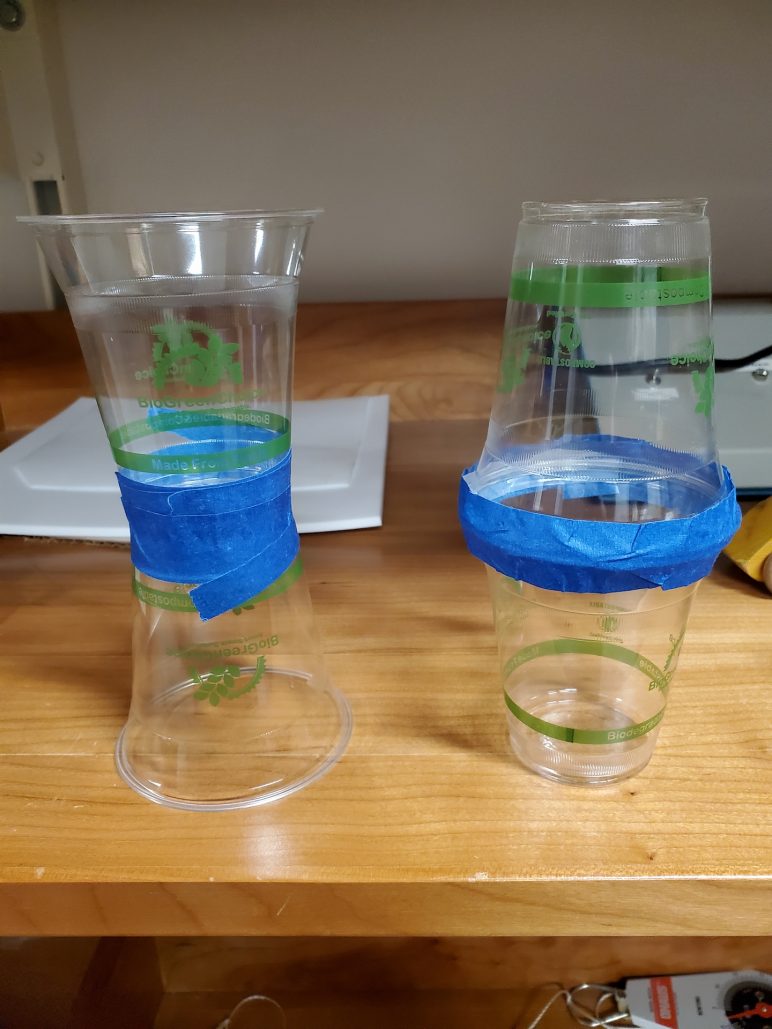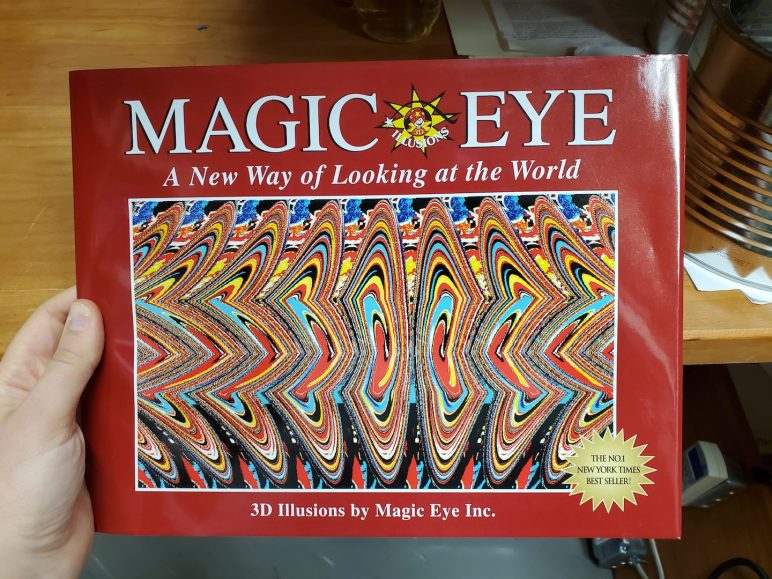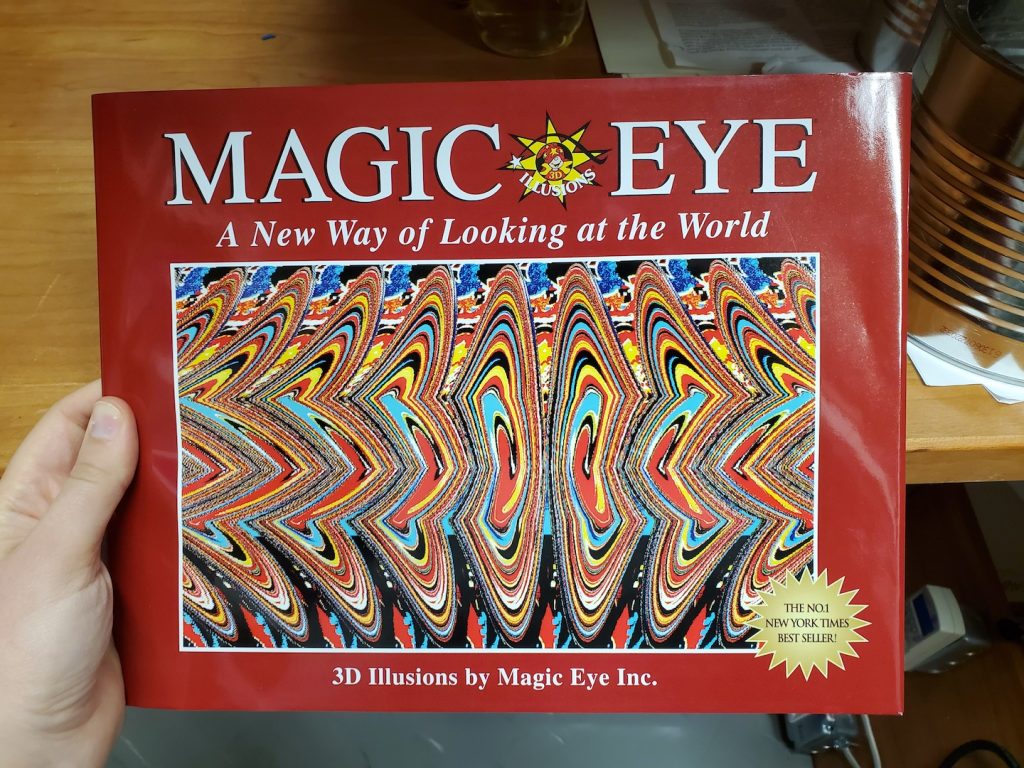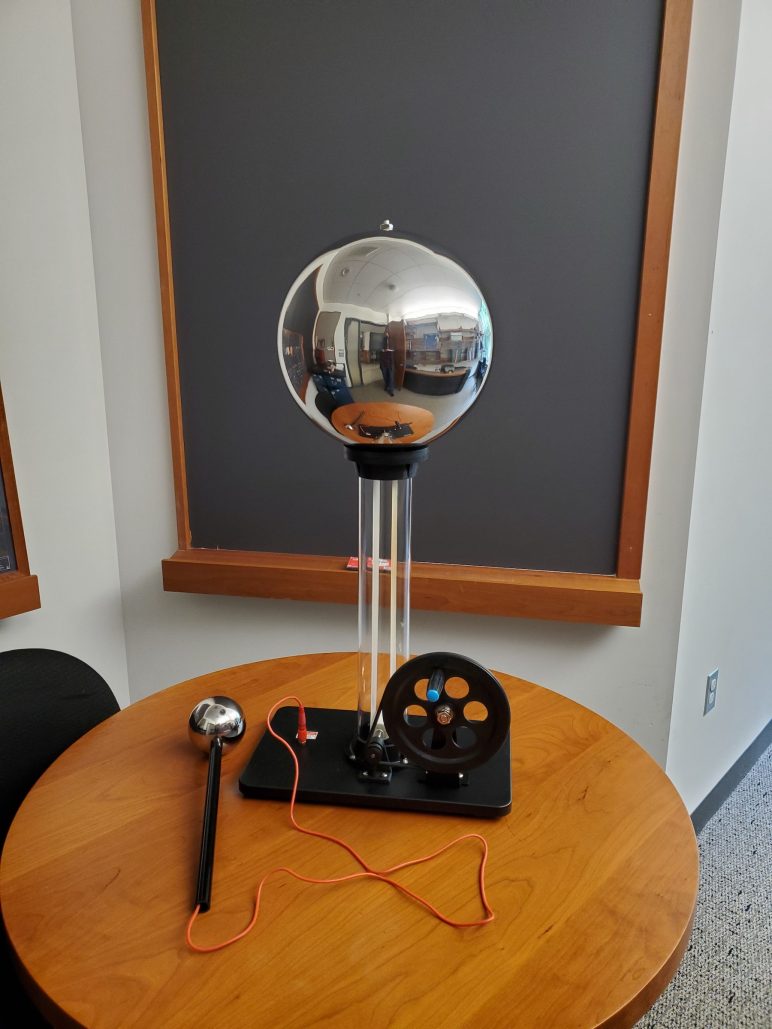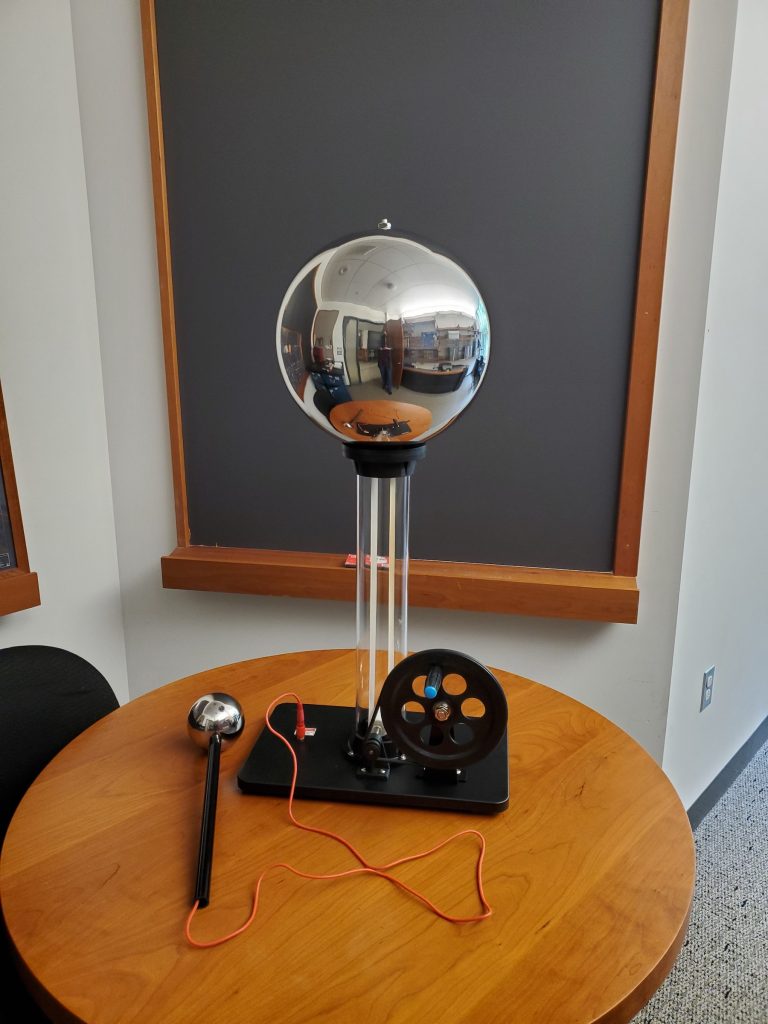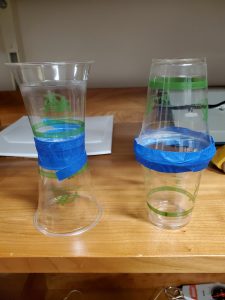
- Cups taped together in two different orientation can be used to discuss stability and why train wheels are shaped the way they are.
- Although the set with the bottoms taped together is stable on a surface when stationary, it isn’t stable when rolling down an optical rail. The reason has to do with the effective size of the circle in contact with the rail on each side of the taped cups.
- The set with tops taped together is stable when rolling and has a similar shape to train wheels, showing how train wheels are constructed for stability.
- Original idea and deeper explanation available through this video
- Cups located in L02, section B-4. Use an optical rail from L35.
